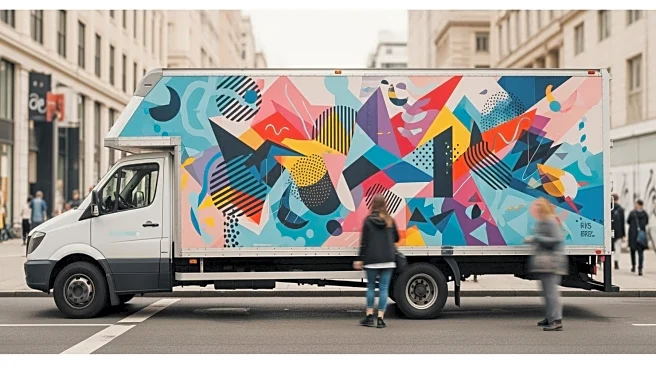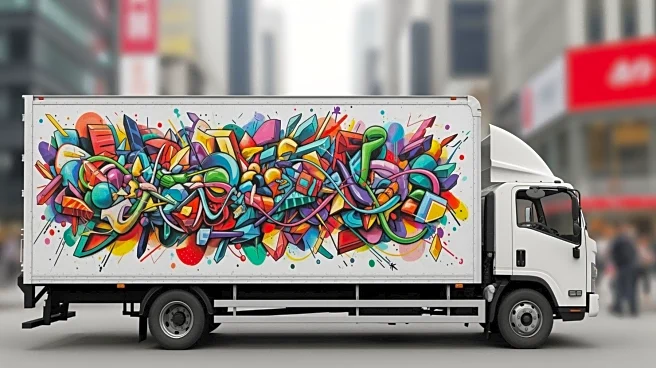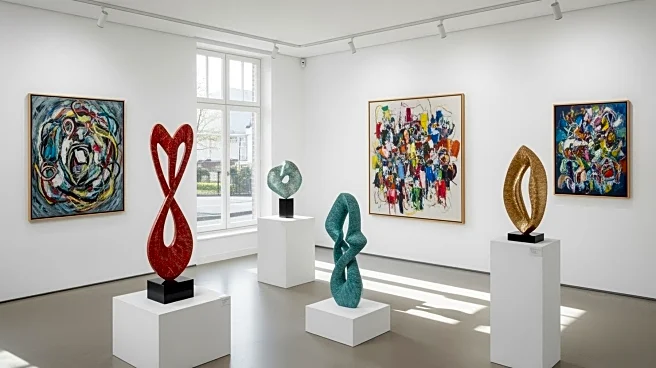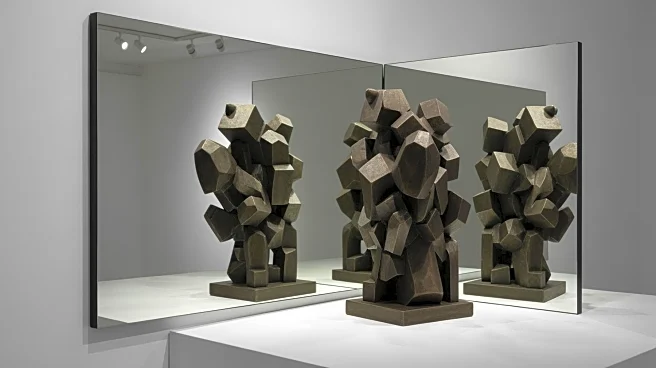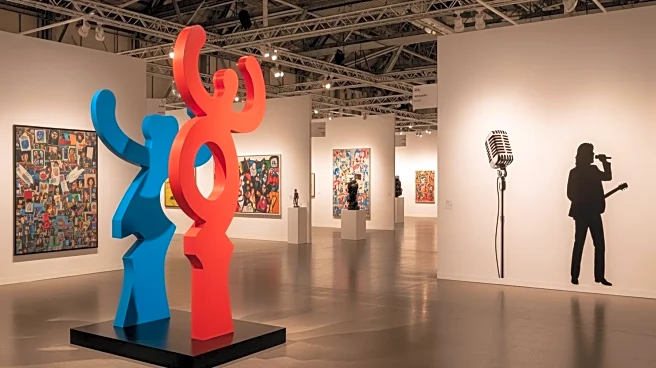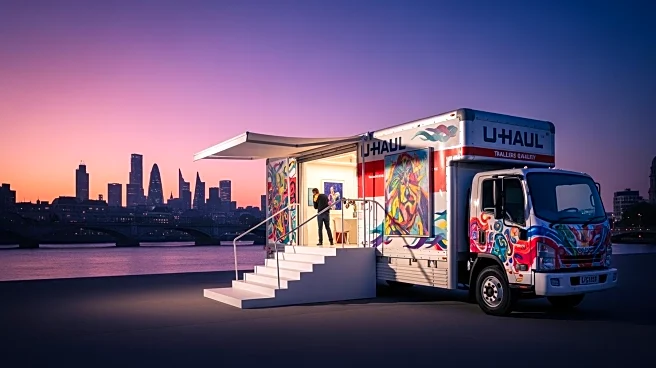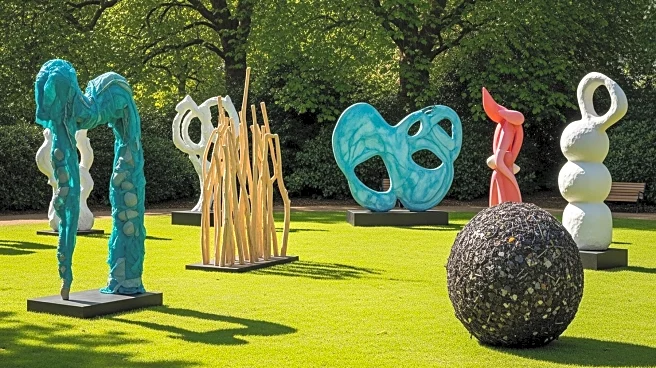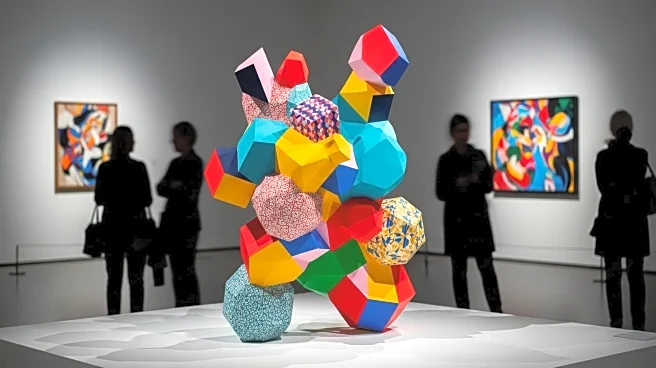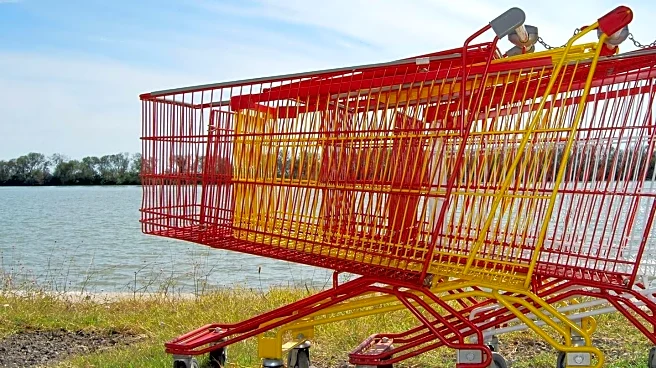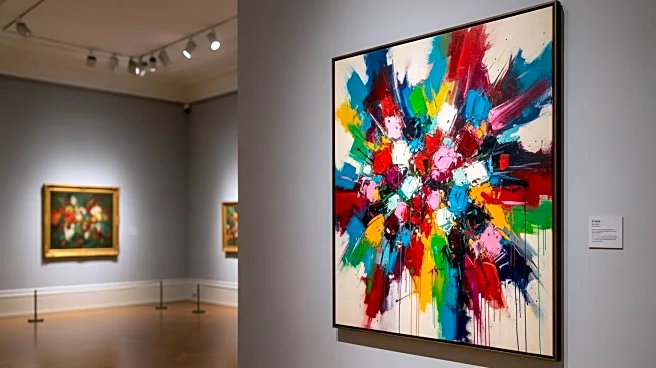What's Happening?
U-Haul Gallery, a nomadic art exhibition initiative, made its debut in London during Frieze London. Founded by James Sundquist and Jack Chase, the gallery operates out of rented U-Haul trucks, showcasing
art in unconventional spaces. The gallery parked near Regent's Park, displaying works by Vladimir Umanetz, including a portrait of Tina Turner, priced at £10,000, and a mixed-media piece by Umanetz and Hikari Hamada, priced at £11,000. The initiative aims to empower artists by utilizing affordable real estate, with the truck rental costing £750. Despite warnings from park wardens, the gallery successfully engaged passers-by before relocating.
Why It's Important?
The U-Haul Gallery's approach challenges traditional art exhibition norms by democratizing access to art and reducing overhead costs for artists. This model allows artists to reach broader audiences, potentially increasing exposure and sales. It highlights a shift towards more accessible and innovative art presentation methods, which could influence future art exhibitions and galleries. The initiative also underscores the importance of adaptability and creativity in the art world, especially in urban settings where space is limited and expensive.
What's Next?
The success of U-Haul Gallery at Frieze London may inspire similar initiatives, encouraging artists to explore unconventional spaces for exhibitions. As the gallery continues to operate, it may face logistical challenges, such as securing locations and navigating local regulations. The concept could expand to other cities, fostering a global movement of mobile art galleries. Stakeholders, including artists and art enthusiasts, may advocate for more supportive policies to facilitate such innovative art displays.
Beyond the Headlines
The U-Haul Gallery's approach raises questions about the commercialization of art and the role of traditional galleries. It challenges the exclusivity often associated with art exhibitions, promoting inclusivity and accessibility. This model could lead to a reevaluation of how art is valued and consumed, potentially influencing cultural perceptions and market dynamics. It also highlights the intersection of art and urban space, encouraging dialogue about public art and its impact on community engagement.
